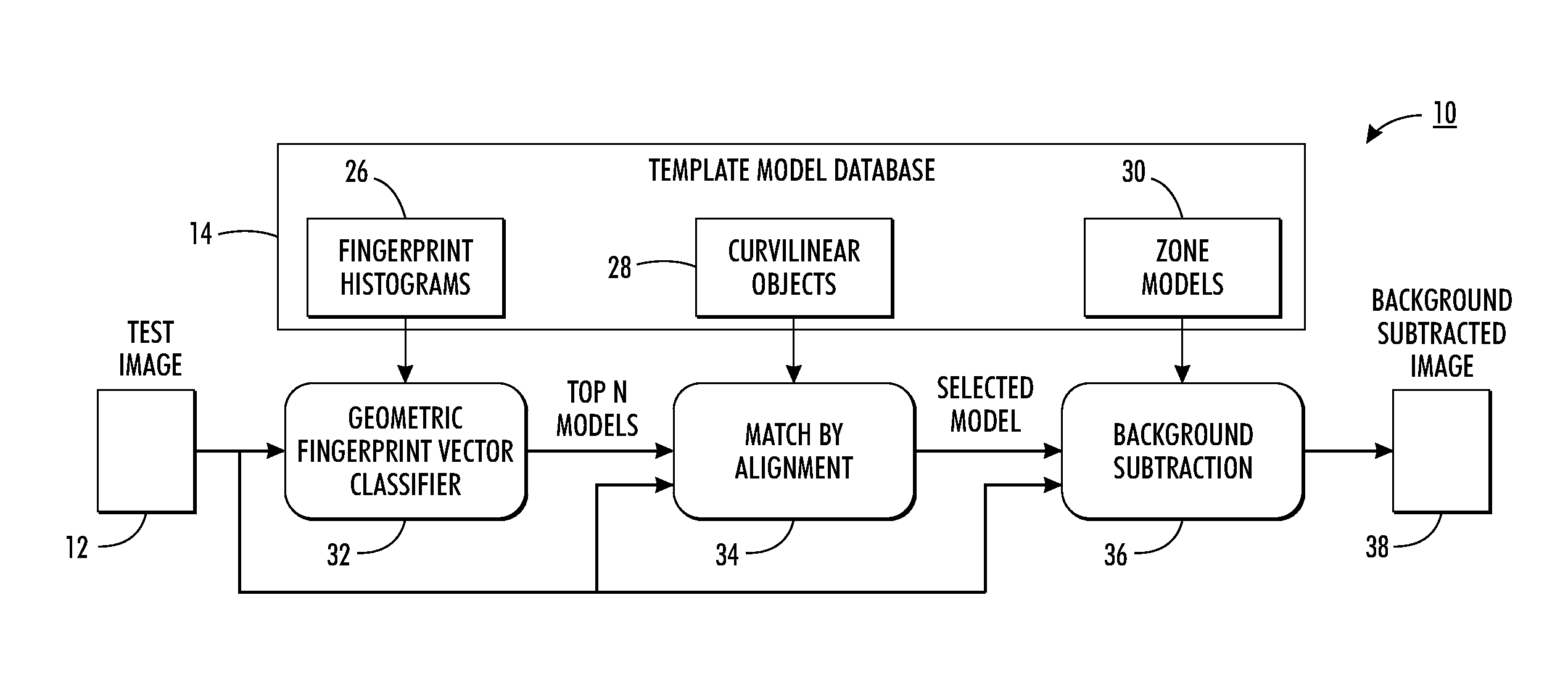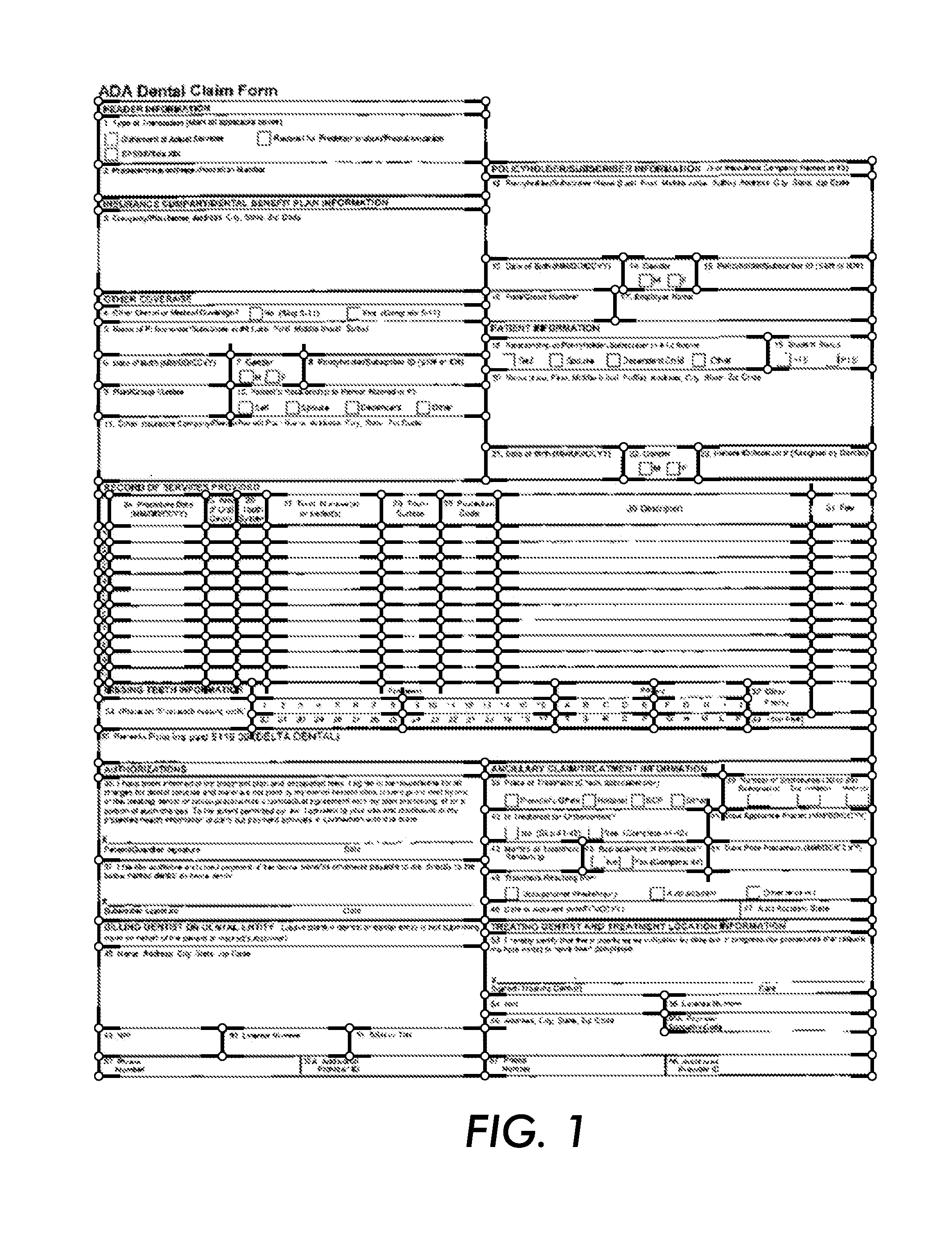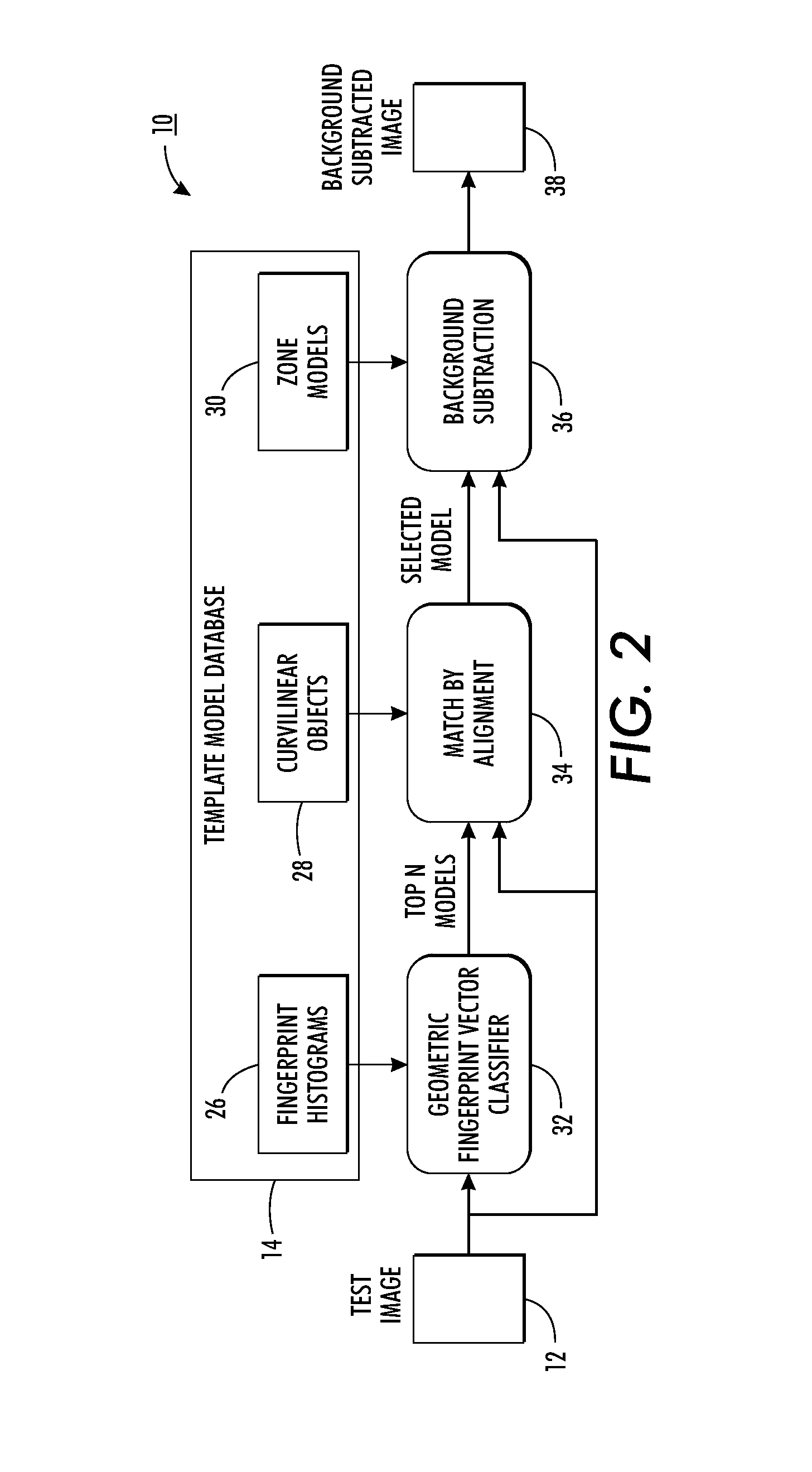System and method for forms classification by line-art alignment
a technology of line-art alignment and classification method, applied in the field of image processing, can solve the problem that the zonal ocr does not work correctly when printed and/or handwritten data
- Summary
- Abstract
- Description
- Claims
- Application Information
AI Technical Summary
Benefits of technology
Problems solved by technology
Method used
Image
Examples
Embodiment Construction
[0031]By way of background, the present application provides a method and system for performing document type classification of a test image representing a form which has characteristic line-art and for subtracting the line-art and data field text descriptions once the document type has been identified using a template model for the identified document type.
[0032]The disclosure includes extracting line-art of the test image. Thereafter, an initial classification stage is performed that uses line-art junctions as key points to generate a fingerprint frequency descriptor of the test image. The fingerprint frequency descriptor is compared against fingerprint frequency descriptors corresponding to a set of template models, each template model corresponding to a different document type. Based on the comparison, the top N template models are selected. A successive classification step is then performed where the line-art of the test image is aligned to the top N template models. For each o...
PUM
 Login to View More
Login to View More Abstract
Description
Claims
Application Information
 Login to View More
Login to View More - R&D
- Intellectual Property
- Life Sciences
- Materials
- Tech Scout
- Unparalleled Data Quality
- Higher Quality Content
- 60% Fewer Hallucinations
Browse by: Latest US Patents, China's latest patents, Technical Efficacy Thesaurus, Application Domain, Technology Topic, Popular Technical Reports.
© 2025 PatSnap. All rights reserved.Legal|Privacy policy|Modern Slavery Act Transparency Statement|Sitemap|About US| Contact US: help@patsnap.com



